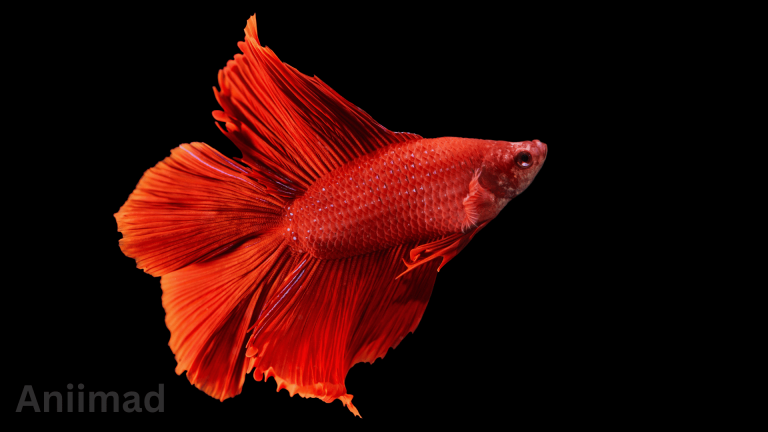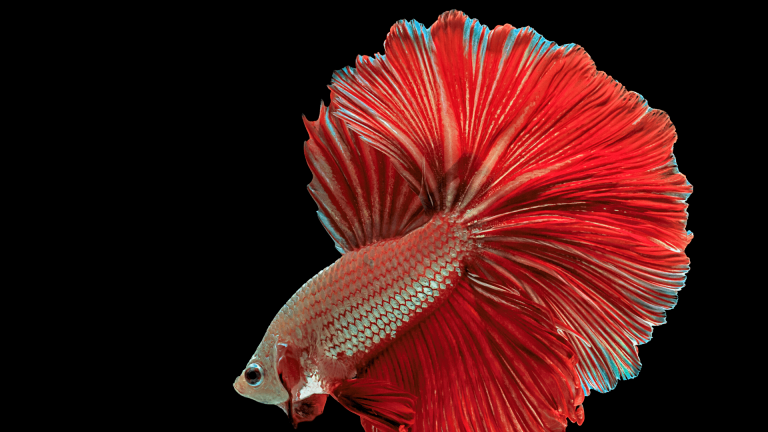Can Betta Fish Live Together: A Guide to Peaceful Coexistence
Contents
- 1 Can Betta Fish Live Together?
- 2 Can Two Female Bettas Live Together?
- 3 Can Bettas Live With Other Fish Species?
- 4 Can A Male And A Female Betta Fish Live Together In The Same Tank?
- 5 How To Introduce New Fish To Your Male Or Female Betta
- 6 Best Tank Mates For Betta Fish
- 7 Frequently Asked Questions About Can Betta Fish Live Together
- 8 Conclusion
Discover the fascinating world of Betta fish and learn if they can live together peacefully. Explore expert insights, tips, and FAQs about Can Betta Fish Live Together in this comprehensive guide.
Betta fish, also known as Siamese fighting fish, are renowned for their vibrant colors and graceful swimming. However, many aquarists wonder if these beautiful creatures can coexist in the same tank without turning into a brawl. In this article, we’ll dive deep into the world of Betta fish to understand if they can indeed live together harmoniously. From their natural habitat to tank setups, compatibility factors, and expert tips, you’ll find all the information you need to create a thriving Betta community.
Can Betta Fish Live Together?

The question that aquarium enthusiasts often ask is, “Can Betta fish live together?” The answer isn’t straightforward. Betta fish can live together under certain conditions and with proper precautions in place.
Understanding Betta Behavior
Before delving into the potential cohabitation of male and female bettas, it’s essential to grasp their natural behaviors. Male bettas, known for their territorial and aggressive tendencies, are inclined to defend their space from perceived intruders. Female bettas, on the other hand, can also exhibit aggression, but their behavior is generally less intense compared to males.
Creating a Balanced Environment
Successful coexistence between male and female bettas relies heavily on the setup and conditions of the aquarium. Here are key factors to consider:
Tank Size
A spacious tank is crucial to provide separate territories and reduce stress. A tank size of at least 20 gallons is recommended to ensure ample swimming space and minimize confrontations.
Plants and Hiding Spots
Live or artificial plants, caves, and decorations serve as hiding spots and visual barriers. These elements help create a more complex environment, allowing bettas to establish their territories and escape potential conflicts.
Female Group
Introducing a small group of female bettas (3 to 5) can help diffuse the male’s attention and aggression. The presence of multiple females can spread out interactions and establish a natural hierarchy.
Monitoring and Introducing Bettas
Careful monitoring is essential when introducing male and female bettas. Follow these steps for a smoother transition:
Introduce Simultaneously
It’s advisable to introduce the male and female bettas into the tank simultaneously. This prevents one fish from establishing territory before the other enters.
Observe Interactions
Watch closely for signs of aggression, such as flaring fins, chasing, or nipping. Occasional displays of aggression are normal, but relentless chasing or fin damage requires intervention.
Separate if Necessary
If aggression becomes excessive or if any fish shows signs of stress, be prepared to separate them into individual tanks to prevent harm.
Can Two Female Bettas Live Together?

Betta fish, also known as Siamese fighting fish, have long captured the fascination of aquarium enthusiasts with their stunning colors and intriguing behaviors. Among the questions that arise is whether two female bettas can coexist peacefully in the same tank. In this article, we will explore the concept of creating a “sorority” tank, where multiple female bettas share an environment, and the considerations that come with it.
The Sorority Tank Concept
Unlike their male counterparts, female bettas are generally less aggressive and territorial. In the wild, female bettas occasionally form loose groups, and it is possible to replicate this behavior in a well-designed aquarium. A “sorority” tank consists of multiple female bettas living together, with careful planning and management to minimize conflicts.
Setting Up the Sorority Tank
Creating a successful sorority tank requires attention to detail and proper preparation:
Tank Size
A larger tank is essential to provide enough space and territory for each female betta. A minimum tank size of 20 gallons is recommended to reduce aggression and promote a healthier environment.
Hiding Spots
Live plants, decorations, and caves offer hiding spots and break lines of sight, reducing potential confrontations. Females should be able to establish their territories and retreat from perceived threats.
Introducing Multiple Females
It recommends introducing at least three to five female bettas at the same time. Introducing them simultaneously can help establish a natural hierarchy and reduce the focus on a single fish.
Observation and Intervention
Monitoring the interactions between female bettas is crucial for a successful sorority tank:
Initial Interactions
Expect some initial displays of dominance and hierarchy establishment. Flaring fins and brief chases are common as the fish determine their roles.
Continuous Monitoring
Regularly observe the bettas for any signs of aggression or stress. Pay attention to persistent chasing, fin-nipping, or visible injuries.
Separation if Necessary
If conflicts escalate or if one fish is being relentlessly targeted, be prepared to separate the aggressive individual temporarily. A backup plan and quarantine tank are advisable.
Can Bettas Live With Other Fish Species?

Betta fish, with their vibrant colors and unique personalities, are a popular choice for aquarium enthusiasts. While male bettas are known for their territorial and sometimes aggressive behavior, it is indeed possible to create a harmonious community tank by carefully selecting compatible tank mates. In this article, we will delve into various fish species that can coexist peacefully with bettas.
Choosing Compatible Tankmates
When selecting tankmates for betta fish, it’s essential to consider factors such as temperament, size, and water requirements. Here are some fish species that are generally compatible with bettas:
Corydoras Catfish
These peaceful bottom-dwellers are a popular choice. They come in various species and sizes, and their playful nature adds an interesting dynamic to the tank.
Neon Tetras
Neon tetras are small, schooling fish that can add vibrant color and movement to the tank. Their peaceful nature complements bettas well.
Harlequin Rasboras
These small, colorful fish are known for their peaceful and active behavior. They make excellent companions for bettas in a community tank.
Guppies
Guppies are another option, but it’s important to choose females or less flashy male guppies to avoid triggering territorial behavior in male bettas.
Platies
Platies are easy to care for and come in a variety of colors. They are generally peaceful and can thrive alongside bettas.
Snails
Snails, such as Nerite or Mystery Snails, can serve as efficient cleaners in the tank. They have a low impact on the betta’s territory.
Tank Setup and Considerations
Creating a successful community tank involves more than just choosing compatible species:
Tank Size
A larger tank provides more space and reduces stress. A minimum tank size of 20 gallons recommends for a well-balanced community.
Hiding Places
Live plants, caves, and decorations offer hiding spots for both bettas and their tankmates, reducing stress and territorial disputes.
Water Parameters
Ensure that the chosen tankmates have similar water temperature and pH requirements to avoid stress and health issues.
Observation and Compatibility
Introducing new tankmates requires careful observation:
Monitor Behavior
Watch for signs of aggression, stress, or compatibility issues. Some chasing and flaring may occur initially but should subside over time.
Backup Plan
Have a backup plan ready in case certain tankmates do not get along with the betta. Be prepared to separate them if conflicts arise.
Can A Male And A Female Betta Fish Live Together In The Same Tank?

Betta fish, renowned for their vibrant colors and unique personalities, have intrigued aquarium enthusiasts for decades. The prospect of housing a male and female betta together in a single tank can be both fascinating and challenging. In this article, we will explore the dynamics, considerations, and potential outcomes of cohabiting a male and female betta fish.
Understanding Betta Behavior
Before attempting to house a male and female betta together, it’s crucial to understand their natural behaviors:
Male Aggression
Male bettas are territorial and often aggressive, particularly when they encounter other bettas, including females. They display flaring, chasing, and even physical aggression as part of their territorial rituals.
Female Behavior
Female bettas can also be territorial and aggressive, though generally less so than males. Their behavior can vary, and some females may tolerate each other better than others.
Creating a Suitable Environment
Successfully cohabiting a male and female betta requires careful planning and preparation:
Tank Size
A larger tank is essential to provide separate territories and minimize stress. A tank size of at least 20 gallons recommends to reduce the likelihood of aggression.
Hiding Spots
Live or artificial plants, decorations, and caves offer hiding places and create visual barriers. It helps reduce confrontations and allows each betta to establish its territory.
Dividers
Some aquarium setups use dividers to physically separate the male and female bettas, allowing them to see each other without direct contact. It can reduce aggression but doesn’t eliminate stress.
Observing Interactions
Introducing a male and female betta requires close observation:
Initial Interaction
When introducing the male and female betta to the same tank, expect some initial displays of aggression, such as flaring and chasing.
Watch for Stress
Monitor both bettas for signs of stress, such as loss of appetite, hiding, or unusual behavior. Prolonged stress can lead to health issues.
Separation if Needed
If aggression becomes intense or if either betta shows signs of distress, be prepared to separate them into individual tanks to prevent harm.
Alternative Options
While cohabiting a male and female betta can be challenging, there are alternative ways to enjoy these fish:
Breeding Setup
If you’re interested in breeding, a carefully planned breeding tank setup allows for controlled interactions between a male and female betta.
Separate Tanks
Keeping a male betta in one tank and a female betta in another eliminates the risk of aggression and stress while still allowing you to appreciate their beauty.
How To Introduce New Fish To Your Male Or Female Betta

Introducing new fish to an existing betta aquarium requires careful planning and consideration. Whether you have a male or female betta, the process of introducing new tankmates should be gradual and stress-free to ensure the well-being of all inhabitants. In this article, we’ll guide you through the steps to successfully introduce new fish to your betta’s environment.
Step 1: Research and Compatibility
Before adding new fish to your betta’s tank, research compatibility thoroughly. Choose fish species that are known to coexist peacefully with bettas. Peaceful community fish like tetras, guppies, and catfish are often good options. Avoid aggressive or fin-nipping species that could stress out your betta.
Step 2: Quarantine
Quarantine any new fish before introducing them to your betta’s tank. It helps prevent the spread of potential diseases. Keep the new fish in a separate tank for a couple of weeks, monitoring for any signs of illness.
Step 3: Prepare the Tank
Ensure the existing aquarium is well-established, properly cycled, and equipped with hiding spots and decorations. It gives both the new fish and your betta places to retreat and establish territories.
Step 4: Visual Introduction
Before direct contact, introduce the new fish to your betta visually. Place the new fish in a separate container within the tank or a floating bag for a few hours. It allows your betta to become accustomed to the presence of the new fish without physical contact.
Step 5: Physical Introduction
Once the visual introduction has been successful and your betta appears calm, you can proceed to release the new fish into the tank. Be present during this process to monitor interactions closely.
Step 6: Monitor Behavior
Keep a close eye on interactions among the fish for the first few days. Some chasing and territorial behavior may occur initially. However, if aggression escalates to a point where any fish is harmed, be prepared to intervene and separate them temporarily.
Step 7: Feeding and Routine
During the initial days, ensure all fish are getting adequate food. Monitor their feeding habits and make any necessary adjustments to the feeding routine. Over time, the fish may become more accustomed to each other’s presence.
Step 8: Patience and Observation
The key to a successful introduction is patience and careful observation. Give the fish time to adjust and establish their hierarchy. If issues persist, you might need to reconsider the compatibility of the chosen tankmates.
Best Tank Mates For Betta Fish

Betta fish, with their vibrant colors and captivating personalities, are popular additions to aquariums. To create a harmonious and thriving aquatic community, choosing the right tank mates is essential. In this article, we will explore some of the best tank mates that can coexist peacefully with betta fish.
Criteria for Choosing Tank Mates
When selecting tank mates for your betta fish, keep the following criteria in mind:
Temperament
Choose peaceful and non-aggressive fish that won’t trigger territorial behavior in your betta.
Size
Opt for fish that are similar in size to your betta to minimize the risk of predation or intimidation.
Water Parameters
Select fish with similar water temperature and pH requirements to ensure all inhabitants thrive.
Activity Level
Consider fish that occupy different areas of the tank, such as bottom-dwellers, mid-level swimmers, and surface fish.
Top Tank Mates for Betta Fish
Here are some excellent options for compatible tank mates:
Corydoras Catfish:
Peaceful bottom-dwellers that help keep the tank clean. They come in various species and sizes.
Neon Tetras
Small, schooling fish known for their vibrant colors and peaceful nature.
Harlequin Rasboras
Active and colorful fish that swim in schools, adding movement and visual interest to the tank.
Kuhli Loaches
Eel-like bottom-dwellers are active at night, making them an intriguing addition to your tank.
Otocinclus Catfish
Algae-eating catfish that help maintain a clean environment. They are peaceful and active during the day.
Guppies (Females)
Female guppies are generally less flashy and can coexist well with bettas.
Platies
Peaceful and colorful fish that come in various patterns. They thrive in community tanks.
Mystery Snails
Non-aggressive snails that contribute to tank cleanliness and provide an interesting visual element.
Tank Setup and Observation
When introducing new tank mates, follow these steps:
Tank Size
A spacious tank (at least 20 gallons) with hiding spots and plants provides a suitable environment for all inhabitants.
Introduce Gradually
Quarantine new fish and gradually introduce them to the betta’s tank, starting with visual contact.
Monitor Behavior
Observe interactions closely during the introduction phase. Some initial chasing or curiosity is normal, but intervene if aggression escalates.
Backup Plan
Have a backup tank ready to separate any aggressive or stressed fish if needed.
Frequently Asked Questions About Can Betta Fish Live Together
Can male Betta fish live together?
Male Betta fish are highly territorial and often fight, making it challenging for them to coexist. It’s best to keep them separate.
How many Betta fish can I keep in a 20-gallon tank?
In a 20-gallon tank, you can keep a sorority of female Betta fish, typically around 4-6, provided you have ample hiding spots and proper filtration.
Do Betta fish attack other species?
Betta fish can be aggressive towards other brightly colored fish with long fins. Avoid housing them with similar species.
What signs indicate Betta fish aggression?
Aggressive Betta fish may flare their gills, display vibrant colors, or nip at other fish. Watch for these signs and separate them if needed.
Can Betta fish live with snails or shrimp?
In many cases, Betta fish can coexist peacefully with snails and certain shrimp species. However, monitor their interactions.
How can I reduce Betta fish aggression?
Ensure a spacious tank, provide hiding spots, and maintain proper water conditions. Separation may be necessary if aggression persists.
Conclusion
In conclusion, Can Betta Fish Live Together if you follow specific guidelines and create a suitable environment. While their territorial nature can lead to conflicts, a well-planned tank setup can foster a harmonious Betta community. By understanding their behavior and providing the right conditions, you can enjoy the beauty of multiple Betta fish peacefully coexisting in your aquarium.






